Subfamily Hemidactyliinae Phylum Chordata Rank Genus | Family Plethodontidae Scientific name Bolitoglossa Higher classification Lungless salamander Order Salamander | |
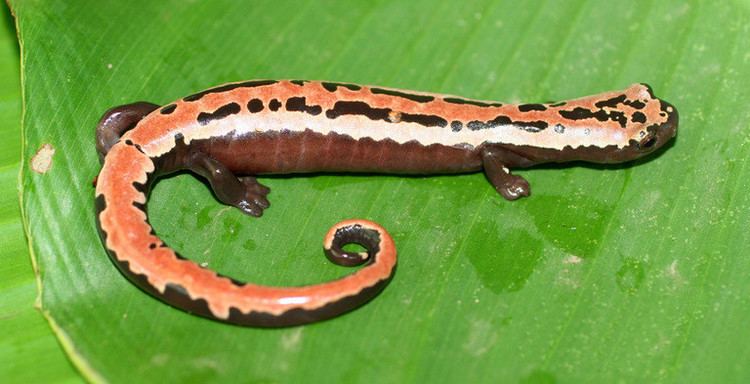 | ||
Lower classifications Mexican climbing salamander, Nauta salamander, La Palma salamander, Doflein's salamander, Bolitoglossa platydactyla | ||
Bolitoglossa pandi salamander pandi amphibians colombia
Bolitoglossa is a genus of lungless salamanders, also called mushroom-tongued salamanders tropical climbing salamanders or web-footed salamanders, in the family Plethodontidae. Their range is between northern Mexico through Central America to Colombia, Venezuela, Ecuador, Peru, northeastern Brazil, and central Bolivia. Neotropical salamanders of the Bolitoglossa genus make up the largest genus in the order Caudata, consisting of approximately one-fifth of all known species of salamanders. Adult salamanders range anywhere from 45mm to 200mm in length depending on their specific species. They are notorious for their ability to project their tongue at prey items, as indicated from their name. They are also known for their webbed feet, having significantly more webbing than any other species outside their genus with the exception of the cave-dwelling Mexican bolitoglossine Chiropterotriton magnipes. Although webbed feet are a common characteristic of these salamanders, only about half of the species in this genus contain webbed feet.
Contents
- Bolitoglossa pandi salamander pandi amphibians colombia
- Hand and foot morphology
- Tail autotomy
- Poison
- Natural selection
- Hybridization
- Taxonomy
- Species
- References
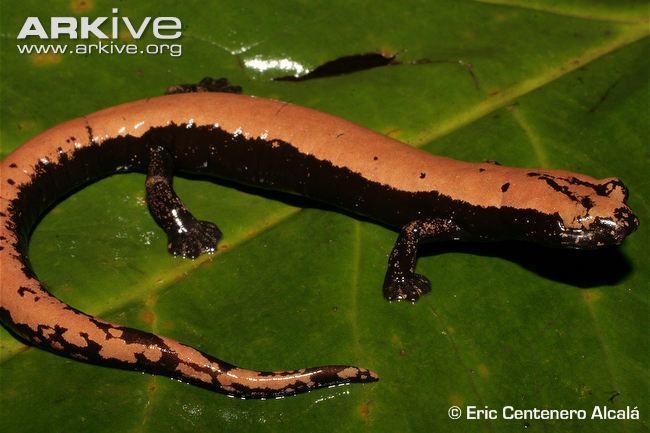
Hand and foot morphology
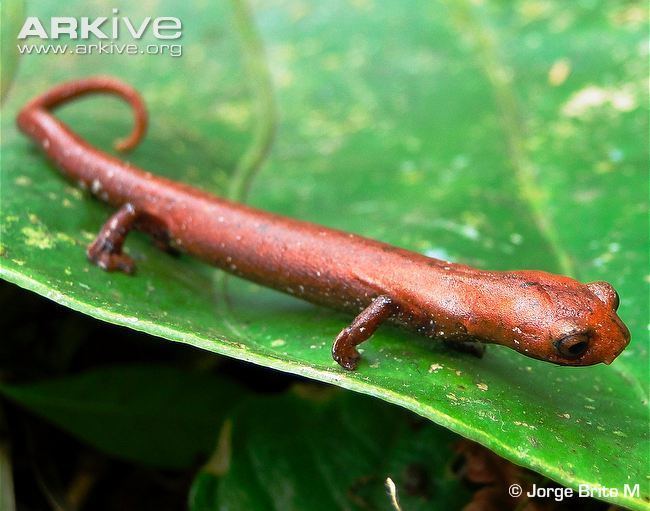
Hand and foot morphology is strikingly diverse in an otherwise morphologically uniform group. While just under half of these species contain webbing between their fingers and toes, the remaining species experience little to no webbing and undergo elongation of their fingers and toes throughout development. Ultimately, the variation of foot morphology within this genus is primarily due to natural selection. Derived characteristics correspond to arboreal vs. terrestrial salamanders.

Tail autotomy

Tail autotomy refers to the salamanders’ ability to release or lose their tail if necessary. This is a common characteristic of nearly all salamanders and lizards. (See autotomy). It is particularly helpful to the salamander in escaping attacks from its predators. Once the tail has been lost, it can regenerate one time. After this regeneration, the tail is incapable of separation with regeneration.
Poison
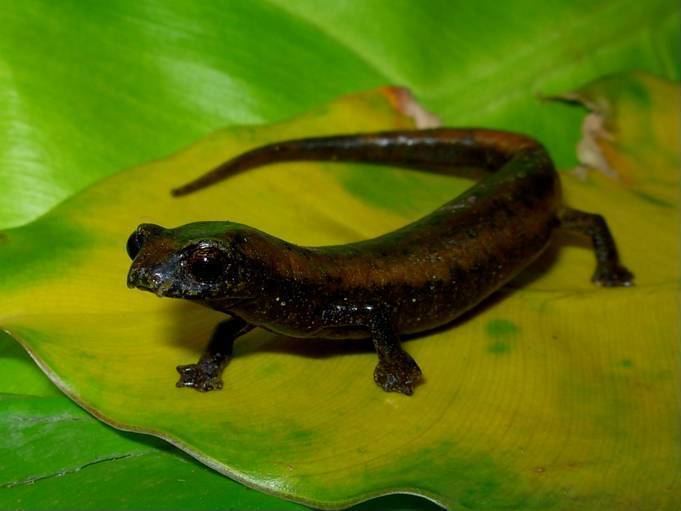
Bolitoglossa rostrata and B. subpalmata are two rare examples of poisonous salamanders within their genus. The poison is secreted through their skin as an antipredator mechanism. It is particularly toxic to certain snake species, rendering them immobile and unresponsive to external stimuli upon initial contact. The common defense tactic of these two species is to remain still in the presence of the snake until it makes initial contact (usually by the flickering of its tongue), and then run away as the paralytic poison begins to take effect in the snake.
Natural selection

Tropical adaptation of the Bolitoglossa genus is thought to have evolved from North American plethodontids. Natural selection is responsible for morphological changes shifting from those supporting temperate environments to those supporting tropical environments such as Panama and Costa Rica. Natural selection is thought to have resulted in genetic changes from physical adaptation. The main differences that have developed from natural selection affect the skull and bones of the feet in these salamanders. Due to these primary changes, secondary changes are believed to have followed, including:

Phylogeny of this genus is partially dependent on its variations in bone structure due to the effects of natural selection over a long period of time.
Hybridization
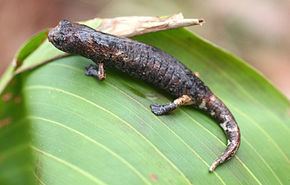
The first documented case of hybridization in tropical salamanders occurred between B. frankini and B. resplendens. This hybridization has taken a pervasive effect on the morphology of B. resplendens, whereas B. frankini seemed to maintain its same physical structure.
Taxonomy
Derived characteristics of the genus Bolitoglossa has led to their classification based on this specific list of characters:
Classification of this genus is primarily accomplished through analysis of the salamanders’ DNA. This has proven to be the most effective and accurate way of classifying this genus.
Species
As of early 2017, there are 131 species assigned to this genus, including the species listed below.
